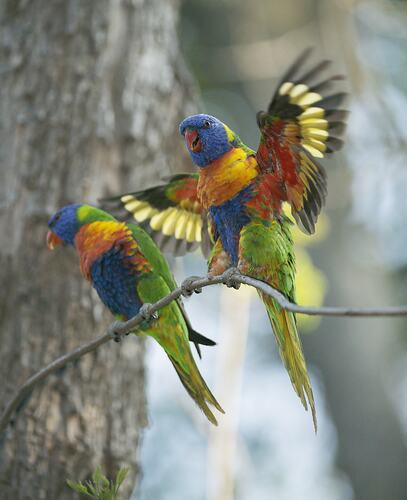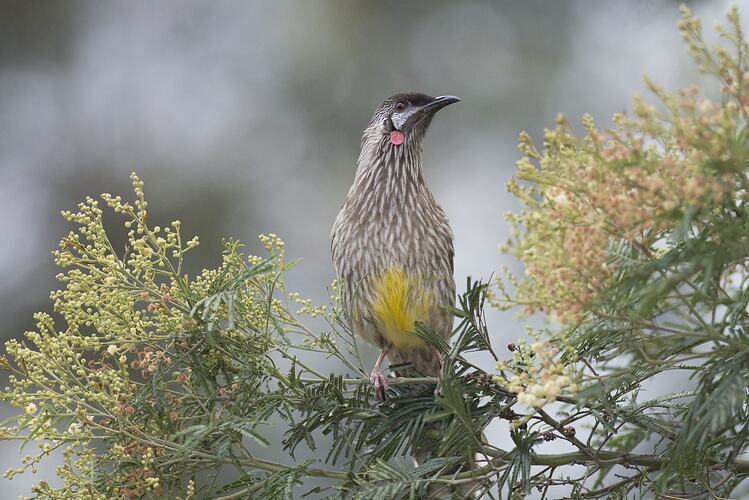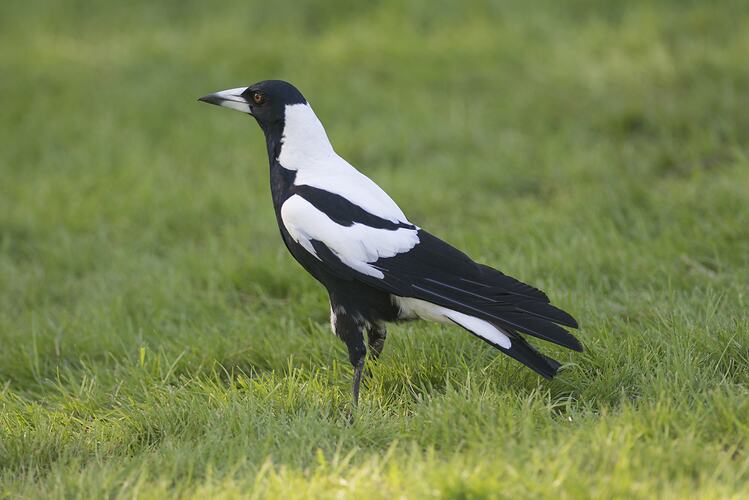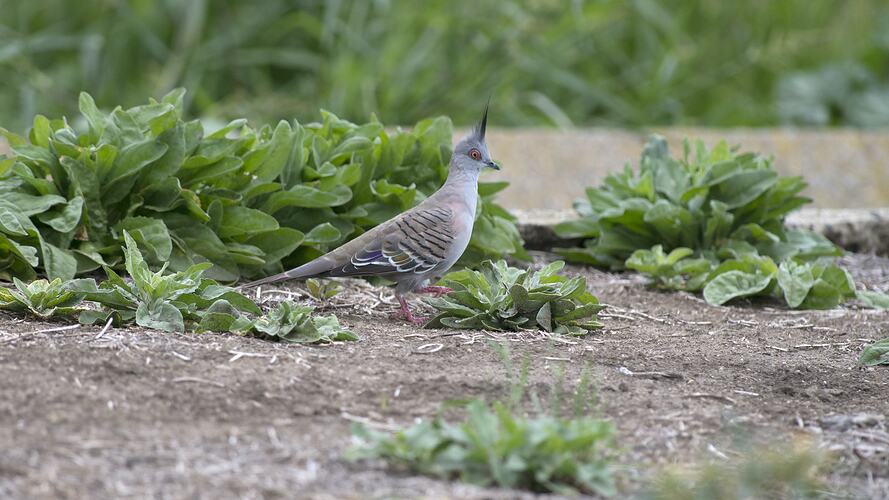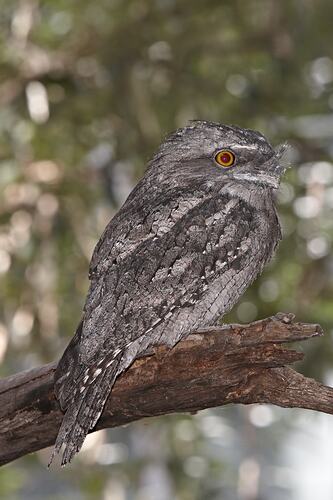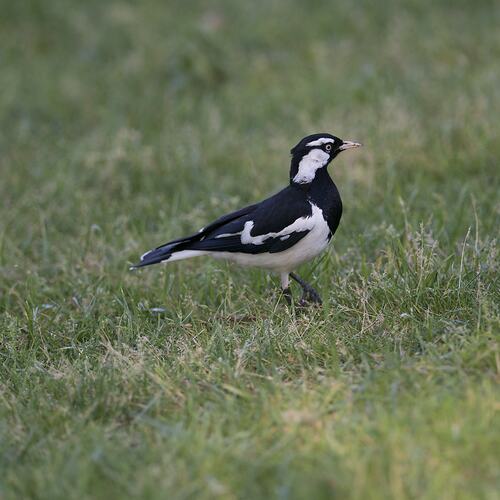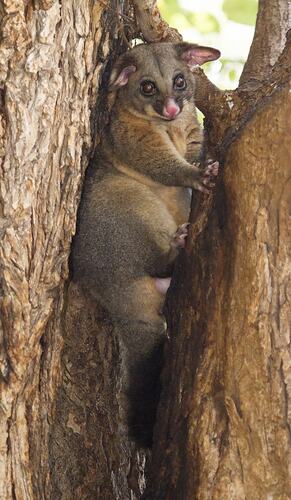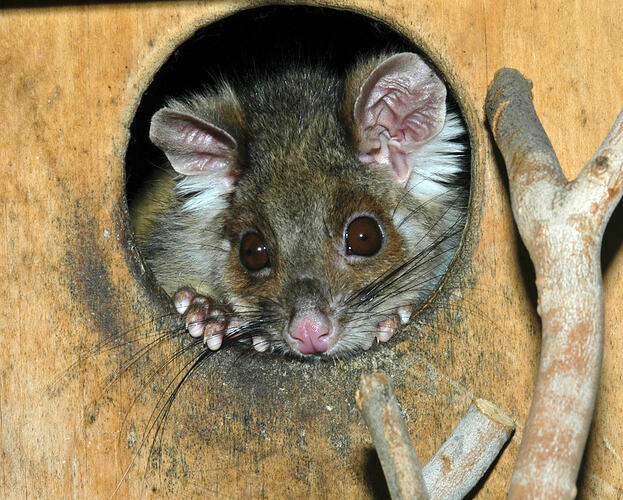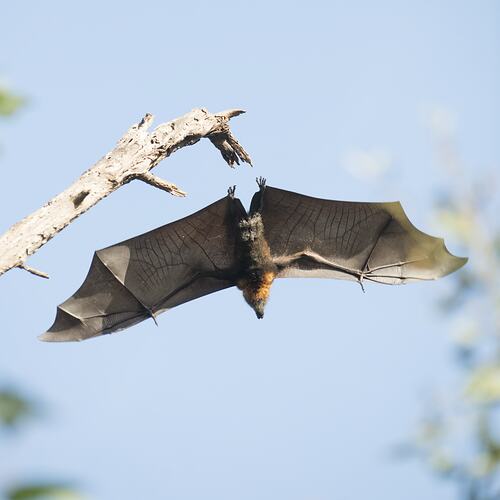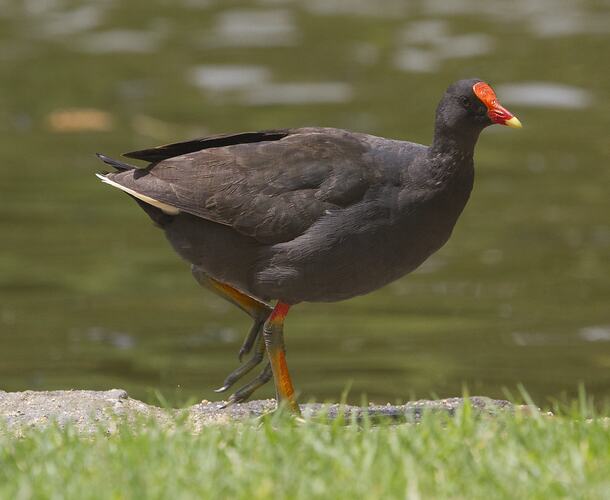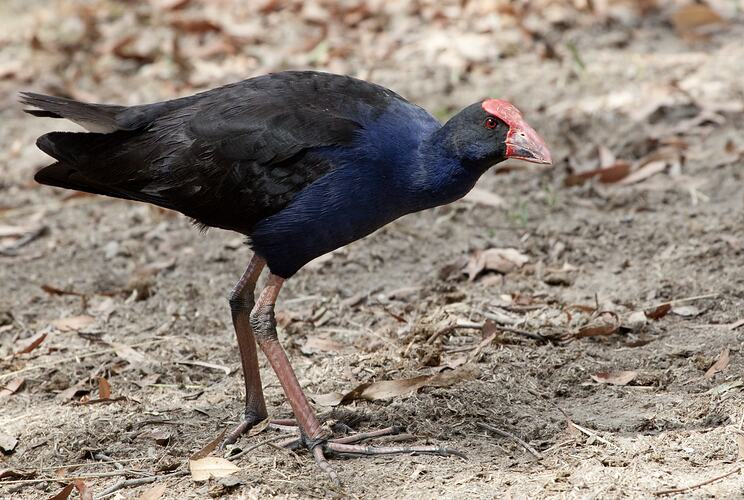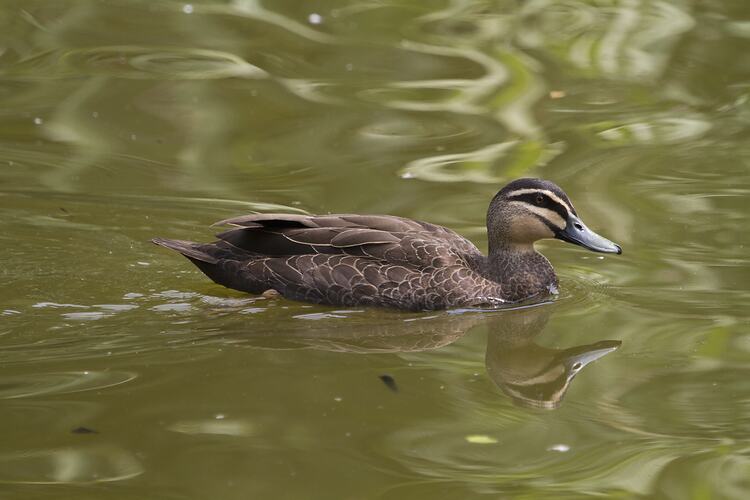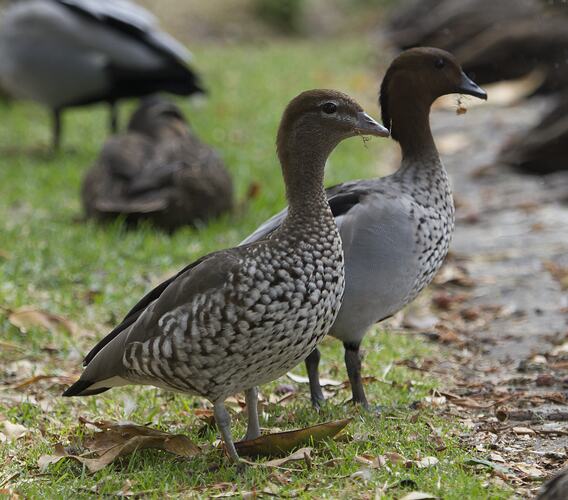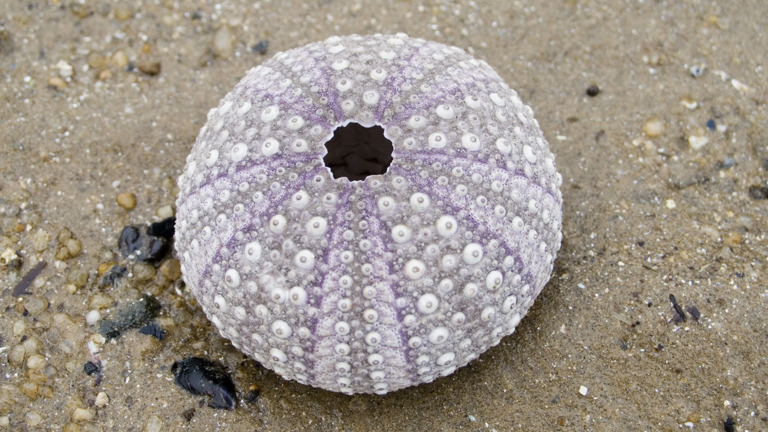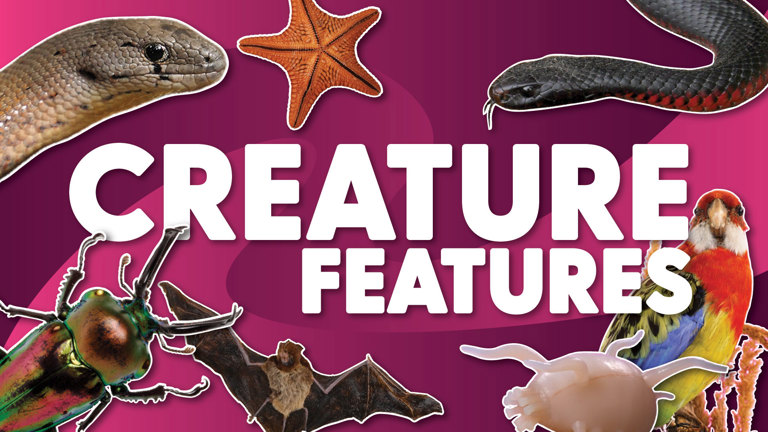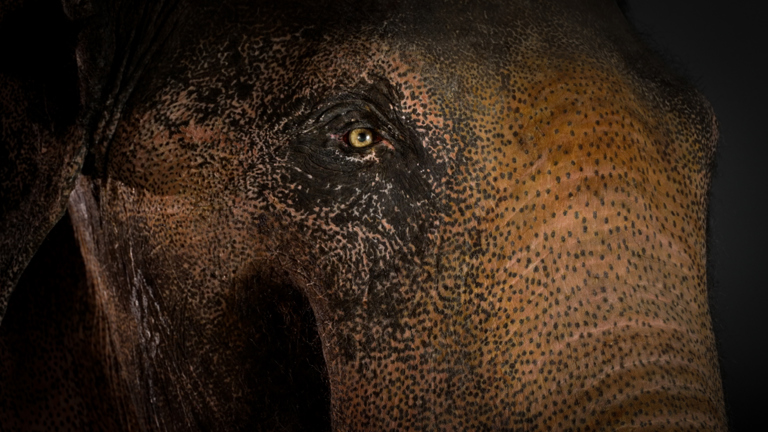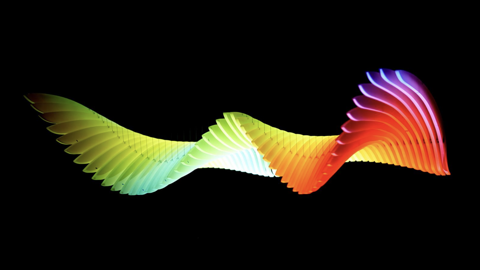What can I find in the park?
Even in cities like Melbourne, parks are full of biodiversity just waiting for you to explore. See if you can spot these birds, mammals and reptiles living in your local park.
Want to look for creatures in the soil as well? Lots of animals that you can find in your garden also live in your local park.
1. Rainbow Lorikeet
Rainbow Lorikeets are hard to miss.
These colourful little parrots usually occur in pairs, but they often roost communally and move in loud, fast flocks. They drink nectar from native trees, but also eat fruit, seeds and insects.
Rainbow Lorikeet nest in pairs, and both parents feed the chicks. The pairs mainly nest in eucalyptus tree hollows, but can be found in other places like at the base of palm fronds, or even in termite mounds!
There’s lots of natural and artificial food in urban areas, so Rainbow Lorikeets are common in parks.
2. Red Wattlebird
If you hear a raucous cackle from a native tree, look up and you’ll probably find a Red Wattlebird.
Red Wattlebirds are a type of honeyeater. They drink nectar from native flowers, but sometimes enjoy fruit or even insects.
By drinking nectar from flowers, Red Wattlebirds also collect and spread pollen, just like bees. Many bird-pollinated flowers are red (but can be yellow, or even green) which attracts hungry honeyeaters like wattlebirds.
Red Wattlebirds get their name because of the red flaps of skin hanging beside their beaks, called ‘wattles.’
3. Australian Magpie
What would an Australian park be without a magpie? Their famous warble is one of the most varied and complex bird songs in the world.
The black and white colouring of these birds is unmistakable. In Melbourne, male Australian Magpies have a completely white back, but the back of a female is a mottled grey. Can you tell them apart?
Young magpies are also grey, but have darker beaks and eyes than the adults. North of Melbourne, magpies start to show black backs, rather than white.
You’ll probably see Australian Magpies walking along the ground. They’ll be using their beaks to probe the ground for delicious insects and larvae.
Australian Magpies will even remove the stingers of wasps and bees before snacking on them—pretty smart, right?
4. Crested Pigeon
This groovy little Australian bird is a Crested Pigeon.
You may come across a pair or small flock of Crested Pigeons foraging in the park for seeds and insects.
If the flock takes flight, make sure to listen. When Crested Pigeons take off, they make a distinctive whistling sound. That sound is made by their wings!
As they land, Crested Pigeons raise their tail high in the air, flashing the underside of their tail feathers.
5. Tawny Frogmouth
During the daytime, you’ll have to look very carefully to find a Tawny Frogmouth.
Tawny Frogmouths are nocturnal, meaning they sleep during the day. They perch on trees that match their colours, blending right in.
By stretching out its neck and staying still, a Tawny Frogmouth can look just like a branch.
Tawny Frogmouths look a bit like owls, but they’re not owls at all. They’re more closely related to a group of birds called nightjars.
6. Magpie-lark
If it looks a little bit like a magpie, but much smaller, it’s probably a Magpie-lark.
These black and white birds can be seen walking slowly over the ground, foraging for tasty treats like insects and earthworms. The males have a black line behind the eye, but the females don’t.
Magpie-larks often call in pairs. They have a very distinctive ‘pee wee’ call. That’s where they get their other name: the Peewee.
7. Common Brushtail Possum
The Common Brushtail Possum isn’t Australia’s only possum, but it is the largest.
Possums are nocturnal, and so are mostly active at night. If you’re in the park at dusk or dawn, you’re more likely to see possums up in the trees.
During the day, they sleep in tree hollows and other nooks—including in buildings.
Possums are marsupials, and carry their young babies in a pouch, just like kangaroos.
8. Ringtail Possum
If you do see a possum, have a look at its tail.
Ringtail Possums have coiled tails with a white tip. Their tails are not as bushy as a Brushtail Possum.
Ringtail Possums are the only species of possum that makes a nest, called a drey. A bit like a bird’s nest, the drey is a large ball of small branches, grasses and leaves built high in a tree.
They’re also the only possum species where males help care for the babies.
9. Grey-headed Flying-fox
As the sun starts to get low, you might see the silhouettes of flying-foxes in the sky. Flying-foxes are also called fruit bats.
There are two species of flying foxes in Victoria, but in places like Melbourne you’re much more likely to see the Grey-headed Flying-fox. It’s the largest bat species in Australia.
These flying-foxes form large, loud camps near rivers, sleeping upside down in the trees during the day. At night, they fly in search of flowers and fruit.
Bats are very important to the world’s ecosystems. Not only do they pollinate trees and farm crops, but they also keep insect populations from getting too big—the world wouldn’t be the same without bats!
10. Eastern Blue-tongue
On a warm day, you might be able to see an Eastern Blue-tongue lying in the sunshine.
Lizards like the Eastern Blue-tongue need warmth from the sun to warm up their bodies. This is different to us humans, who make our own warmth inside our bodies.
The big blue tongue of this lizard is for scaring off predators. If threatened, the blue-tongue will run towards the threat, sticking out its tongue.
If this doesn’t work, it might also hiss and flatten its body to look bigger.
Once it’s warmed up and ready to start their day, a blue-tongue will munch on all sorts of food, including flowers, fruits and berries, and snails and beetles that it can crush with its strong jaws.
11. Tiger Snake
In some parks, you might come across a Tiger Snake.
Tiger Snakes are active during the day, and like other reptiles they warm their bodies by basking in the sunshine. They can also be seen moving around at twilight, or even at night in warm weather.
Tiger Snakes eat other animals, including fish, lizards, and frogs!
Since frogs are such a large part of their diet, Tiger Snakes often live beside watery environments like creeks and wetlands, hiding under fallen timber or in animal burrows.
Tiger snakes are extremely venomous. But remember, leave a snake alone, and it will leave you alone.
Although there are lots of myths about snakes, they’re an important part of our local wildlife.
Watching for waterbirds!
Does your local park have a pond, lake, or river? If it does, you’ll have all sorts of amazing wetland wildlife! See if you can spot these waterbirds splashing in the shallows.
1. Dusky Moorhens
Dusky Moorhens can often be found wading in the shallows or swimming on the surface. Their distinctive red face-shield and large feet are easy to spot.
Dusky Moorhens live in groups, and all adults give a helping hand when raising chicks. Lots of females lay their eggs in the same nest, which is a platform made from water plants, like reeds. All the birds in the group help incubate and feed the young.
2. Purple Swamphens
Purple Swamphens look similar to Dusky Moorhens. However, Purple Swamphens are bigger, and purple rather than black.
With their large feet, Purple Swamphens prefer to roam amongst the reeds and other plants at the edge of the water, rather than swimming. However, they are still very good swimmers!
Watch a Purple Swamphen’s distinctive walk. As they step, Purple Swamphens flick their tail up, revealing the white feathers beneath.
Purple Swamphens eat the leaves, seeds, flowers and stems of plants that grow in the water. But they also eat other animals, like fish, frogs and birds.
3. Eurasian Coots
Another common waterbird is the Eurasian Coot.
Like the moorhens and swamphens, Eurasian Coots also have face shields, but their shields are white.
These waterbirds can dive underwater for up to 15 seconds in search of underwater plants to eat. Sometimes, they also eat worms, insects and fish.
Eurasian Coots prefer not to fly, but you may see them running across the water to take off if needed.
4. Pacific Black Duck
If there’s a pond or river at your local park, you’re likely to find a group of Pacific Black Ducks.
These familiar ducks mostly eat plants that grow in the water. They also eat insects, snails, and even small crayfishes.
Watch how these ducks eat. They feed on the surface of the water, which is called dabbling.
If they want to reach food deeper down, they upend, putting their bottoms in the air while they stick their head underwater.
Pacific Black Duck pairs usually mate for life, and you may see ducklings in spring and summer.
5. Wood Ducks
Wood Ducks are another common duck species you may see at your local park.
These ducks spend more time on land beside water, rather than on the water itself. They munch on grass and chase after insects, but fly into the water for safety.
Wood Ducks lay eggs in tree hollows, where the ducklings hatch. Altogether, the ducklings jump out of the hollow and ‘parachute’ to the ground with their feet and wings out to slow the fall.
It’s a big jump for a little ducking!
Once they land, the parents gather the ducklings up to feed.
You can easily tell a male and female Wood Duck apart. Male Wood Ducks have a brown head and neck, and the females have white lines above and below their eyes.
Got a question about something you found at the park? Ask Us!
Areas of natural vegetation are one of our planet’s thriving living systems. Experience other incredible connections that unite all life on Earth and visit the Our Wondrous Planet exhibition at Melbourne Museum.
